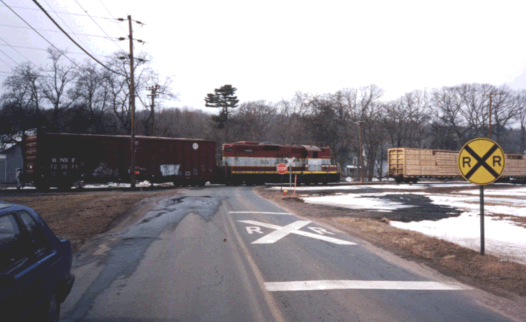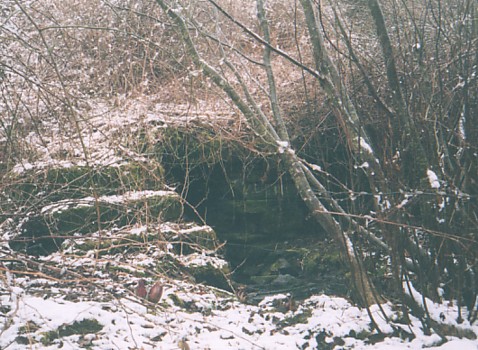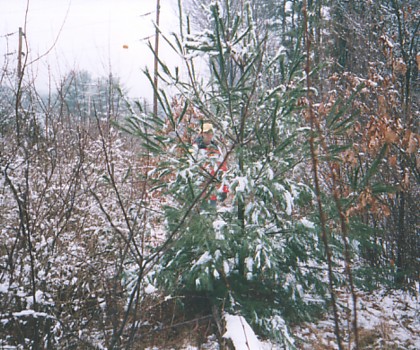
In January, 2003, train crews put a gated crossing in at Day Hill.
Unfortunately, this is as far as the trackage has gone for many years. The end of the line, in the winter of 1999-2000, had an old New Haven Railroad Caboose:

The line terminates not far beyond this car.

The other CNE Engine, at the end of the line.
Of course, this wasn't the end of the original Central New England, which continued on to the Hudson River and beyond. The right of way continues past the Culboro land, through North Bloomfield, en route to Tarifville. The following pictures show the reason why the Central is so interesting: it was an engineering marvel. In north Bloomfield, the line travels through a number of hills and valleys, forcing a number of cuts into rock and a very impressive viaduct. The first cut in North Bloomfield, as well as a viaduct over a valley, are in use as an access road:

The viaduct:

This is not a famous viaduct on the CNE (see the Whiting Viaduct, below, but it is interesting in how it's still in use. There is a small stream running through the stonework at the bottom of the valley being spanned. This stonework has no masonry holding it together: just clever design

The other neat thing that can be seen on the viaduct is an ancient stone wall running UNDER it... obviously from a 19th century (or earlier) farmer. New England has a lot of history! After the viaduct is a second cut, this one not maintained for anything except a powerline right of way. After it is a small river with what is left of a bridge (this picture looking towards Hartford):

The right of way is nearly completely obscured on the other side of this!

But it is cleared again presently, and where it used to cross Tariffville Road en route to Tarrifville (sight of a ghastly train wreck in the latter half of the 19th Century) makes for a pretty winter picture:

The tracks ran through Tarifville and into Simsbury